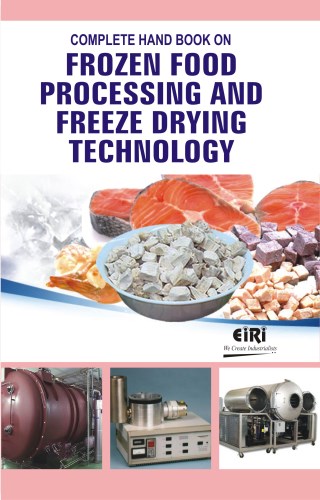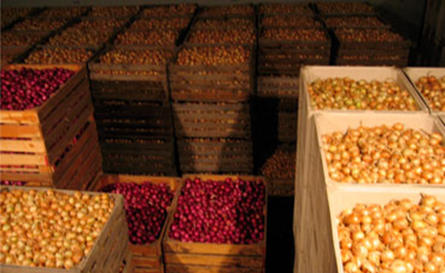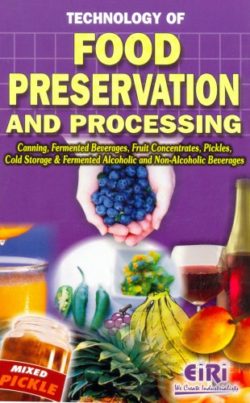Cold storage for potato and onions
Onion, being high in water content, is a delicate commodity to store and requires special procedure and parameters, giving rise to the concept of onion cold storage. The proposed project envisions setting up of an onion cold storage unit in Gujarat to tackle the problem of post-harvest storage. It will be an essential infrastructure for onion exporters, both in private and public sector. Ca cold storage is used to onions and potato. Once they are kept in the cold storage, they do not get spoiled even after many months. Sometimes, in production season of certain vegetable or fruit crop, the demand for that thing decreases, which in turn decreases they consumption in surplus amount of that particular item is kept in a cold storage. So this item, when needed, can be taken from the cold storage & can be made available to consumers very easily.
Onion is an important vegetable crop grown in India and forms a part of daily diet in almost all households throughout the year. It is also used for medical purpose. But due to non-availability of appropriate post-harvest storage facilities, 20-25% of the total produced onions are wasted, which in terms of value amounts to crores of rupees.
Building up of the cold storage unit would minimize the waste upto the level of 3 to 4% that would in turn help the onion growers, and stabilize onion prices in market for all types of consumers.
-

MULTI COMMODITY COLD STORAGE CAPACITY: 500 MT
Read more -

COLD STORAGE FOR POTATO AND ONIONS
Read more -

COLD STORAGE FOR FRUITS, VEGETABLES AND PULSES
Read more -
Sale!

Technology of Food Processing Industries (Hand Book)
USD915.00USD49.00 Add to cart -
Sale!

COMPLETE HAND BOOK ON FROZEN FOOD PROCESSING AND FREEZE DRYING TECHNOLOGY
USD940.00USD49.00 Add to cart
A major challenge in India is potato storage as potato production that takes place in the cold months of October-November to February-March (about four-fifths of total production) is followed by hot summer months; this makes refrigeration necessary for storage. 2 cold storage takes place on a large scale. It is estimated that there were about 3,400 cold storage facilities in the beginning of the 2000s in India (cip, 2006) but they had increased to 5,386 units in 2008 that could store over eighteen million tons of crops. 3 most of the cold storages in India are used towards potato storage. Cip (2006) estimates that approximately three-fifths of potatoes in cold storages are table potatoes, intended for consumption, while the other two-fifths are used for seed. Using average storage fees from our survey (and assuming 80% of cold storage use by potatoes), it is estimated that about 0.4 billion usd is spent yearly by traders and farmers on storage for these potatoes in India, indicating the considerable size of this business.
Selection of location for the cold storage is a very important task. So, this should be done very carefully. While selecting a location for the cold storage the following factors should be accounted for:-
- Market and production field should be near the cold storage so that the expenditure incurred in to and for transportation is less and it is convenient also.
- Cold storage should be near a highway so that the transportation to other cities is not difficult.
- At the site of the cold storage, the cost of the land should be less.
- There should be a convenient arrangement of water and electricity at the location, where cold storage is to be established.
Taking there factors into account, the suitable site for cold storage is chosen and then building is constructed after that machines and instrument are installed to keep the building cold.
The cold chain industry in India is at a very nascent stage and is highly fragmented (~3,500 players) with organized sector constituting 8-10% of the sector. As of 31 july 2015, there are 7,129 cold storage in India with a capacity of about 33 mt, operating approximately 9,000 reefer vehicles in 2014. The industry was valued at around inr400bn in 2015. The cold chain industry is expected to grow at a cagr of 28-30% through 2017 to be valued at more than inr600bn. The cold chain sector is being observed as the sunrise sector with high investment potential.
Cold storage in India has been largely adopted for long- key end industry segments term storage of potatoes, onions and high value crops like apples, grapes and flowers.
Growth in the temperature-controlled warehousing segment is driven by single-commodity potato warehouses, accounting for ~75% of the existing cold storage warehousing capacity in 2015. Only 23% fall in the multi-product category. Cold storages for meat, fish and dairy items and for other items such as chilies and other spices account for only 1% of total cold storage capacity. Pharmaceutical companies are increasingly relying, and spending, on cold-chain storage as temperature sensitive drugs are becoming more prevalent.
India is one of the largest producers of onion in the world second only to china, accounting for 16% of world area and 10% of production. Onion production in 2016 is estimated at 4.7 mt.
the present storage capacity for onion is about 4.6 lakh tonnes, which is quite inadequate compared to india’s total production. Even most of the structures available are traditional and unscientific. If 40 % of the stocks are earmarked for scientific storage the potential for new storage structures is about 12.6 lakh tons.
However, it has been projected by the expert committee on cold storage and onion storage that about 1.5 lakh tonnes on-farm capacity in production areas and 3 lakh tons capacity at apmcs and other market places are required in next 5 years. Thus there remains a vast potential to be tapped.
Eiri have recently prepared dpr on cold storage for potato and onions. Capacity: 5000 mt.(50,000 quintals), plant and machinery cost: Rs. 2.65 cr., project cost: Rs. 6 cr., BEP: 69%.
We can also prepare project report on any subject as per your requirement (we can modify the project capacity and project cost as per your requirement), contact us.





